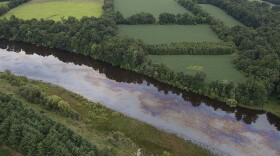High levels of polychlorinated biphenyls (PCBs) have been uncovered during a cleanup in the River Raisin, reports Charles Slat of the Monroe News:
Readings upwards of 10,000 parts per billion — some of the highest levels initially found during a 2007 partial clean-up at the site — also have been found during the recent dredging. “While higher levels of contamination were anticipated in this area, the physical nature, location and levels of PCBs we are seeing in this area are different than what we expected to find, and dissimilar from what we have seen in the past,” reported Scott Cieniawski, project manager for the work for the U.S. Environmental Protection Agency.
PCBs, once used widely as insulators, have been demonstrated to cause numerous health effects and are a "probable human carcinogen," according to the EPA.
PCB production was banned in the U.S. in 1979.
The chemicals were discovered in the River Raisin while dredging a known contamination site near the Port of Monroe.
The cleanup is partially funded by the Great Lakes Legacy Act (part of the Great Lakes Restoration Initiative), and is a joint project between the EPA and the Michigan Department of Environmental Quality.
Officials plan to remove approximately 110,000 cubic yards of PCB contaminated sediment.
The pollution around the River Raisin is one of 43 Great Lakes "Areas of Concern" - places were severe contamination remains.
- Jordan Wyant, Michigan Radio Newsroom





